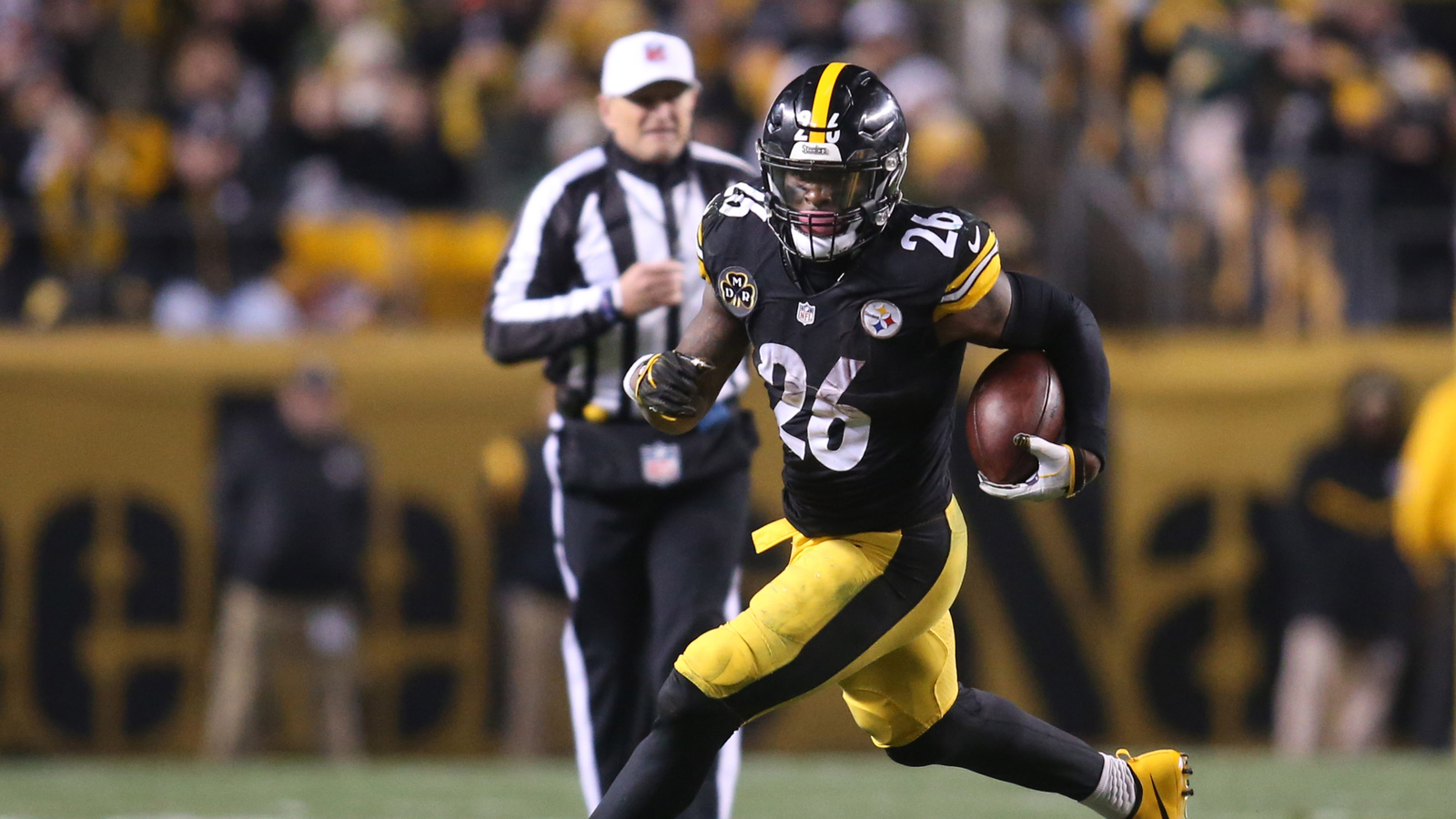By Mark Madden
July 14, 2018

Bell is still looking for a long-term deal from the Steelers. (Charles LeClaire-USA TODAY Sports)
In 2014, running back DeMarco Murray was the NFL Offensive Player of the Year, rushing for a league-best 1,845 yards. He had 449 touches. In 2016, he led the AFC in rushing with 1,287 yards.
But Murray hit a wall last season, his seventh as a pro.
His explosiveness waned. Injuries added up. He rushed for a career-worst 659 yards. He averaged 3.6 yards per carry, another personal low. Murray failed to gain 1,000 yards from scrimmage for the first time since 2012.
This past Friday, Murray retired. He’s 30.
Tomorrow is the deadline for the Steelers to sign Le’Veon Bell to a long-term contract. Failing that, Bell will play 2018 under the franchise tag, then leave via free agency. The coming season will be Bell’s sixth in the NFL. He’s 26.
The template set by Murray should be a cautionary tale for the Steelers: Don’t sign Bell long-term. He’s closer to the end of his prime than he is the middle.
Bell figures to be an old 26, his age exacerbated and body slowed by a heavy workload dating to his college days at Michigan State: 414 touches in 2012, his last NCAA season. That’s even more than his 406 touches in 2017 for the Steelers.
Bell will make $14.5 million under the franchise tag this fall. Depending on his mood, he wants a long-term deal worth $15 million per season (he rapped about it) or $17 million per season (same as wide receiver Antonio Brown).
Premium running backs often get low-balled on contracts. Bell says he wants to set the market for the NFL’s top backs. (That sounds noble. But really, Bell just wants paid.)
But the Steelers shouldn’t pay Bell for what he has done. They should pay him for what he’s going to do.
A five-year deal for, say, $60 million with $30 million guaranteed over the first two years would be risky but not unreasonable. (The Steelers reportedly made such an offer a year ago.) The guaranteed money would be a little over twice as much as Bell gets in ‘18 under the franchise tag. The contract’s average annual value would be $3.75 million more than Atlanta’s Devonta Freeman gets. After Bell, Freeman is the NFL’s highest-paid back.
But Bell wants more, and the Steelers would be foolish to pay more.
Bell’s yards per carry dipped mightily last season, from 4.9 in 2016 to 4.0. His yards per catch also dropped, from 8.2 to 7.7. Bell has two marijuana-related suspensions and had his right knee surgically repaired in 2015.
Perhaps Bell leaving the Steelers after one more season is what’s best.
Coach Mike Tomlin once talked about running Willie Parker “until the wheels fall off.” Parker’s wheels did just that, as he managed just two more years in the NFL after 2007, the last of his three consecutive 1,000-yard outputs.
Parker played just six NFL seasons total. It’s a position that can have a short shelf-life.
It’s also a position where replacements easily can be found. Leonard Fournette, Christian McCaffrey, Kareem Hunt and Alvin Kamara made major contributions as rookies last season. Fournette and McCaffrey were first-round picks, Hunt and Kamara third-round choices. Second-rounder Dalvin Cook and seventh-rounder Chris Carson were on their way to similar impact before early-season injuries cut their campaigns short.
Make no mistake, Bell is elite. But how much longer will he be elite?
The NFL is a passing league. How much do backs matter given their disposable nature and the relative insignificance of the running game? (Though Bell is quality at catching the ball and in pass protection.)
The Steelers shouldn’t sign Bell to a long-term contract. If they don’t, history will show the Steelers played this situation exactly right. Intentionally or not.
Mark Madden hosts a radio show 3-6 p.m. weekdays on WXDX-FM (105.9).


No comments:
Post a Comment